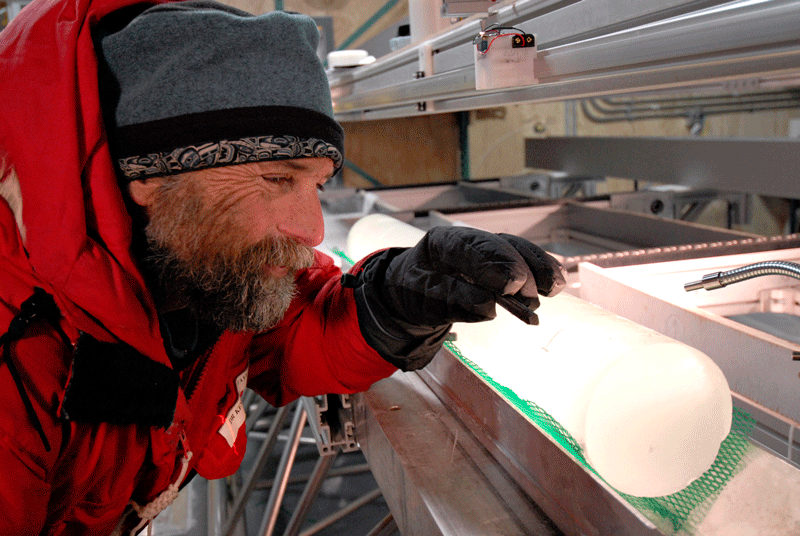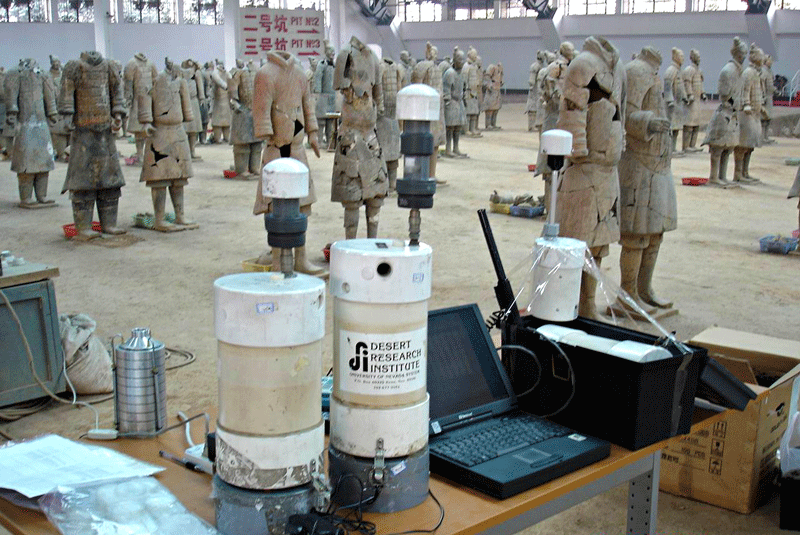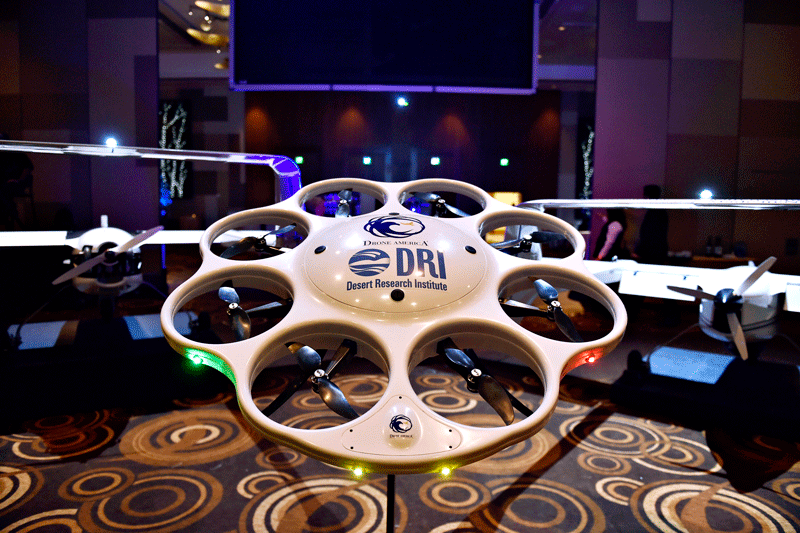Researching A Better Future
A heavyweight in the world of nonprofit scientific labs, Desert Research Institute (DRI) conducts cutting-edge research on hydrology, the atmosphere, ecology, and more. Researchers from the Reno, Nevada-based organization travel the world, searching for ways to better understand the problems that threaten our future. Recent projects helped eradicate the guinea worm disease from Ghana, West Africa, analyzed ice core samples from Antarctica to better understand global climate change, and studied climatic variations in the western United States. The challenge for DRI’s assistant vice president of technology and CIO, Christopher Ipsen, is to support this important work in the most efficient, cost-effective way possible.
DRI faculty members come from more than fifty different scientific fields and perform work on every continent. Many of DRI’s projects demand an enormous amount of computing horsepower. For example, a current project is searching for deep historical context for the multiyear drought that has plagued the western United States. DRI’s Department of Ecological Studies is modeling hundreds of thousands of years of rainfall data—a huge computational exercise.
Ipsen works to help IT contribute more of its expertise so that computational efforts are matched with the best systems to complete the task as efficiently—both in terms of time and cost—as possible. The new approach to IT also involves striving to make research data more accessible to researchers within and outside of DRI. That, Ipsen says, will enhance the quality of DRI’s work and that of researchers elsewhere. He describes this effort as “research-as-a-service.” The principle here is to break down larger research projects into key subcomponents, making them readily available so that others can incorporate them into their projects. For example, a university researcher may know of a DRI study on ice crystal formation. The university researcher might be able to use the data or equipment from an experiment in that DRI project to build on his or her study, or he or she may want to simulate some of the models used.
Research-As-A-Service
“We could either rent out the experiment or contract out to perform the experiment using DRI as the place to provision the computing,” Ipsen says. “We could also enter into a contract with another research entity, like a university, for the DRI researcher to extend that experiment as necessary. It’s a conceptual model that allows for maximum opportunity to the researcher. Extending and formalizing the process through technology will enhance their abilities to further their research.” This concept, he believes, will help researchers earn more grants and provide additional opportunities to pursue their work. What’s more, IT becomes a more integral partner with researchers under this concept.
One of the IT team’s contributions to the research is to analyze how best to perform and schedule large computing exercises. “We’re living in a world where cloud computing is ever-present, so we’re evaluating the right place to do the compute,” Ipsen says. “How do we virtualize these experiments? What if there is high-performance computing equipment that needs to be utilized? We have to identify and categorize all of the subcomponents of the experiment with a high degree of understanding, and we have to make it easy for researchers. There’s a lot of work that goes into provisioning, categorizing, and quantifying what we’re doing.”
Ipsen joined DRI in 2015 after a seven-year stint as CISO and chief IT manager for the State of Nevada. He had gained acclaim in his work with the state—garnering SC Magazine’s CSO of the Year in 2015, among other honors—and brought a fresh perspective to DRI’s IT function. Though largely earning his stripes in IT security, he has spent his first year at DRI focused on other matters, most notably remaking the IT team’s organizational approach to better support researchers and the institute’s overall mission.
Part of that is seeking to boost collaboration with researchers to improve the utilization of technology, including speeding up deployment of computing for research experiments. “This requires a lot of communication between IT and the researchers to understand what their needs are and how to communicate an enterprise approach to the way we use technology,” Ipsen says. In the past, IT was more decentralized. Today, the department is moving toward a more coordinated function that can allocate resources more effectively. Key projects are assigned a dedicated IT representative, whom Ipsen compares to a concierge. “We want to be a partner, not just an order-taker,” he says. Ipsen and his team have also been examining ways to enhance the way researchers present their data, with things like 3-D visualization that can further the institute’s educational aims.
“Our imperative is to make sure the quality of the work we do in IT is commensurate with the work done by our researchers.”
DRI’s Projects
The nature of DRI’s research causes it to test the limits of computing. For instance, working in places with extreme weather conditions such as Antarctica, researchers put hardware through tough trials. Then, there are the heavy demands of large-scale modeling experiments that provide opportunities to test new ways to optimize processing capability. This makes DRI a desirable partner for prominent vendors, including Dell and Microsoft, to test the limits of their products. These organizations can learn from DRI’s experienced IT staff, and vice versa.
Though Ipsen is most enthusiastic about the research-as-a-service concept, he does frequently draw on his IT security background. DRI’s researchers work on projects for the Department of Defense, but the organization is not involved with any work requiring high-level clearance. Nevertheless, security is a key concern, complicated by the fact that researchers from around the world contribute to DRI’s projects. Some of these are from countries that may raise concerns from clients like the Pentagon.
Ipsen and his security team must employ measures such as validated access controls that ensure that only those who are allowed to access certain data can get to it, and protect other data from being accessed by unauthorized users. On the other hand, the institute wants to foster a culture of openness for scientific research, so its security measures must not be so onerous that they stifle advancement of research. Weighing those two factors proves to be a delicate balance.
Ipsen and his staff take great pride in supporting the important, cutting-edge scientific work of institute researchers. Some of this work, such as a recent successful test flight of the first autonomous cloud-seeding aircraft platform, looks to the future. Other DRI efforts have been concerned with preserving priceless treasures of the past.
For example, a current study of indoor air quality at the Emperor Qin Terracotta Warriors and Horses Museum in Xian, China is part of an effort to save two-thousand-year-old life-sized clay figures. The historic artifacts, buried with the Emperor following his death, were unearthed three decades ago, and their exposure to polluted air is slowly destroying them. Acidic particles have eaten into the surfaces of the statues’ richly detailed faces and are weakening the gypsum that holds the joints together.
Chinese scientists sought out DRI researchers for this two-year project—evidence of the institute’s globally recognized scientific capabilities. Ipsen and his team are striving to make IT’s performance meet DRI’s high research standards.
“Our imperative is to make sure the quality of the work we do in IT is commensurate with the work done by our researchers,” Ipsen says. It’s a high bar, but Ipsen is determined to reach it, and his innovative research-as-a-service concept may well propel DRI’s IT to that goal.







